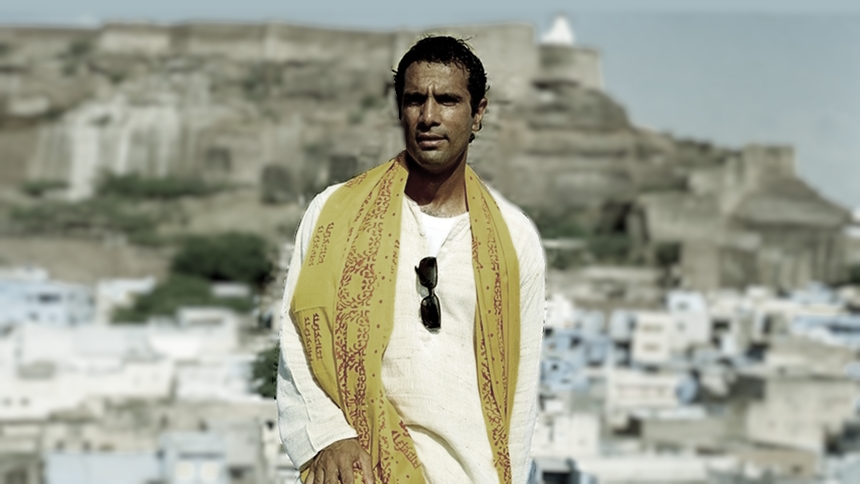Sound And Vision: Tarsem Singh

In the article series Sound and Vision we take a look at music videos from notable directors. This week we take a look at several videos by Tarsem Singh.
Tarsem Singh has only made slightly more than a handful of videos, but their impact can't be understated. Starting with En Vogue's Hold On he established his style clearly, where colorful tableaux vivants are the backdrop for characters striking a pose and looking directly at the camera. The colorization and style seem slightly inspired by classical painting, something that became even more prevalent in his big break-out music video for R.E.M's Losing My Religion (see below). In that video the band are intercut with imagery taken directly from renaissance and baroque paintings, including several references to the likes of Carravagio. The wooden chamber in which these tableaux vivants are situated shows up later in Tarsem's debut feature The Cell, in which this is the setting in a dreamscape where the antagonist revisits his trauma.
It is one of the most classic music videos of all time, so it is no surprise that Tarsem revisited it for The Cell. It is something he did again with the music video for Deep Forest's Sweet Lullaby (see also below), which has a lot of imagery we revisit in his second feature, the amazing The Fall. Here Tarsem shows a group of people dragging a ship behind them, an image that returns in The Fall as people captured in slavery dragging a vehicle for a king. The costume of one of the main protagonists of Sweet Lullaby shows up again in The Fall as the costume of one of the core protagonists there. As does the whole central concept, where we travel all over the world and see several historical landmarks through the eyes of a child. In The Fall, a story in which the world is seen through the perspective of a young girl, there is a similar sequence in which several of the same landmarks are visited. Some of the imagery is cut-and-paste in The Fall, showing that Tarsem takes inspiration from his earlier works all the time.
He also takes inspiration from other people, like in The Cell, which has a sequence that references the art of both Damien Hirst and Floria Sigismondi, or Immortals, which is full of imagery taken from baroque painting (like in Losing My Religion). We should also here mention the influence of costume designer Eiko Ishioka on his work, whom he collaborated intensively with for his feature films, up until Mirror Mirror, when she passed away. Her costuming is emblematic for Tarsem's work, and is part of the success of Tarsem's imagery. That is not to say Tarsem wouldn't be anywhere without her, but that he knew how to infuse his own work with outside influences.
His music video for Lady Gaga's 911 (see also below), wears its influences on its sleeve. There is the most overt nod to the films of Sergei Parajanov, whose Color of Pomegranates is overtly referenced at the end. There is the shot taken directly from Fellini's Otto e Mezzo (8 ½), with Lady Gaga flying in the air while being held by a rope. And there is the costuming that also references Alejandro Jodorowsky's The Holy Mountain, with the enormous pilgrim hats of some of the extra's. What hasn't been pointed out much, though, is that the music video also copies the premise for Ken Russell's segment in the portmanteau-movie Aria. His segment, Nessun Dorma, included below for comparison, has the very same symbolic nature as 911, where a young woman in an accident imagines the people caught in the slipstream of her crash and the rescue, as part of a traumatic dream. In that dream, the medical practitioners and victims of the crash take on the roles of bystanders, and the wounds and surgical equipment become part of a divine ritual. It might be called a blatant ripoff, as there is no way Tarsem Singh wasn't aware of the original. But Tarsem infuses 911 with enough of his own style and other inspirations to make the music video his own.
If one thing is emblematic of Tarsem's work in both music videos and feature films, is that he takes inspiration from anywhere, twists and turns it into something uniquely his. Pablo Picasso once said that 'good artists copy, great artists steal', but the best artists do something even more interesting: they remix. And Tarsem is one of the all time great remixers, like Brian De Palma, Quentin Tarantino or Joe Dante. Even when he misses, with films like Mirror Mirror, Self/Less or Immortals, there is no denying that you are watching something Tarsem made. That is the sign of a great remixer.






